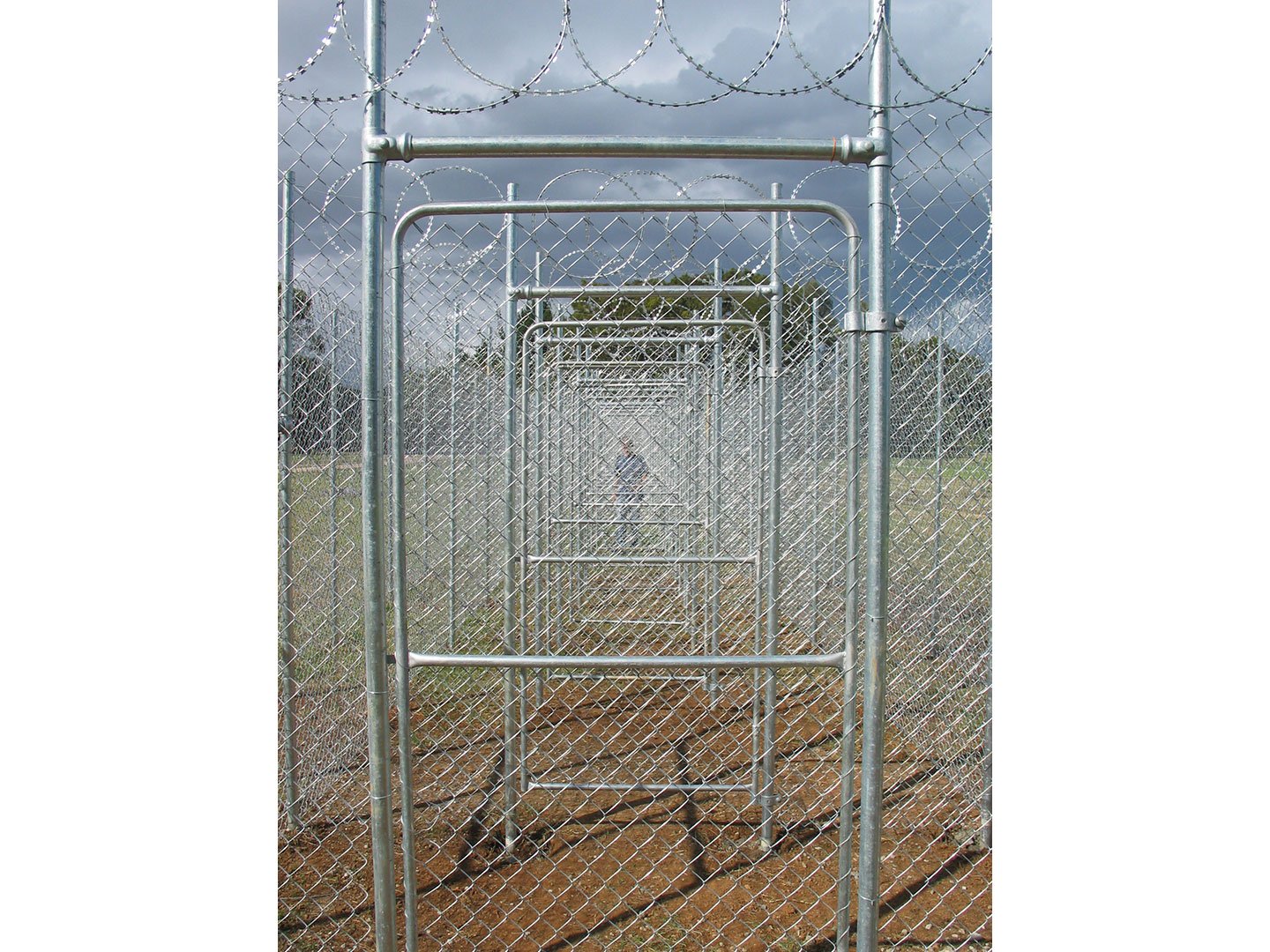Containment, 2006. Cyclone fencing, galvanized pipe, razor wire, 19 spring loaded galvanized pipe and cyclone mess gates. 18 individual cells. 36 x 5 x 2.5 meters. Helen Lempriere National Sculpture Competition.
Containment
The viewer is encouraged to pass through the work’s 19 gates and 18 cells.
Containment explores the psychology of the Australian Federal Government’s policy of mandatory detention of "unlawful non citizens".
Since 1992 thousands of asylum seekers to Australia have been incarcerated for months, or years, in detention camps across Australia and the Pacific. Amnesty International estimates that as of 29 May 2005, 210 people detained in Australian immigration facilities (including the offshore centre on the South Pacific island of Nauru) had been there for over 18 months.
The work’s 18 cells and 19 gates represent the common period of detention experienced by each of those detainees and act as formal devices reinforcing the works themes of opening and closing, inside and outside, containment and freedom.
As an abstraction of the detention centre, Containment seeks to illustrate the bleak, punitive, bureaucratic process of endless applications and appeals for asylum (literally of doors opening and closing), that detainees are subjected to in incarceration.
The work’s interactive dimension, the strategy of encouraging the viewer to pass though the work, is perhaps its essence. It alludes to the sense of all Australians being captive of the physical and psychological barriers that the Federal Government has placed around Australia. And to a general climate of eroding civil liberties as evident in the findings of the 2005 Palmer report and the Anti Terror Bill introduced late 2005- which purports to give Police and ASIO unprecedented powers to detain Australians for up to 14 days without access to legal protections.


